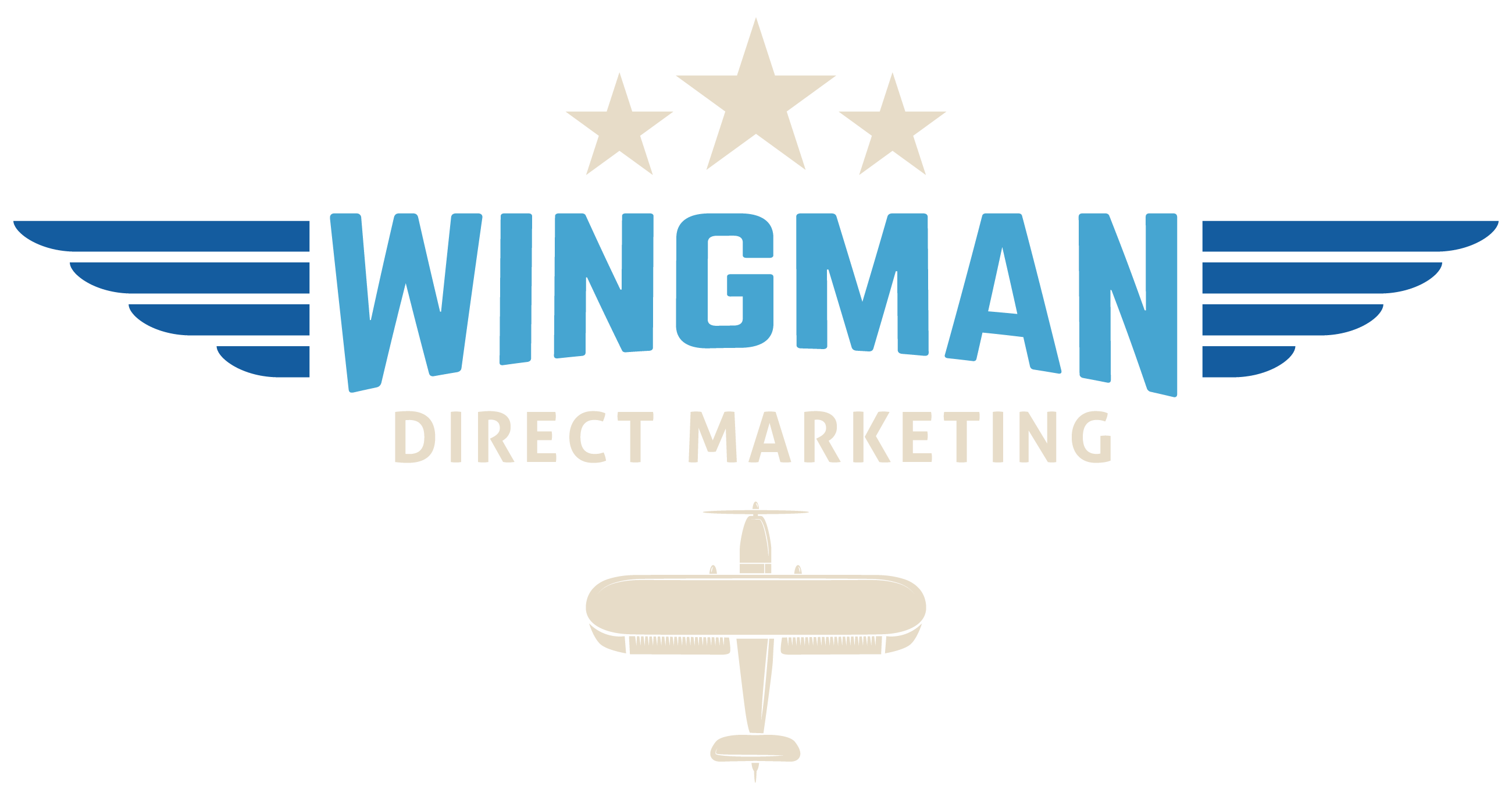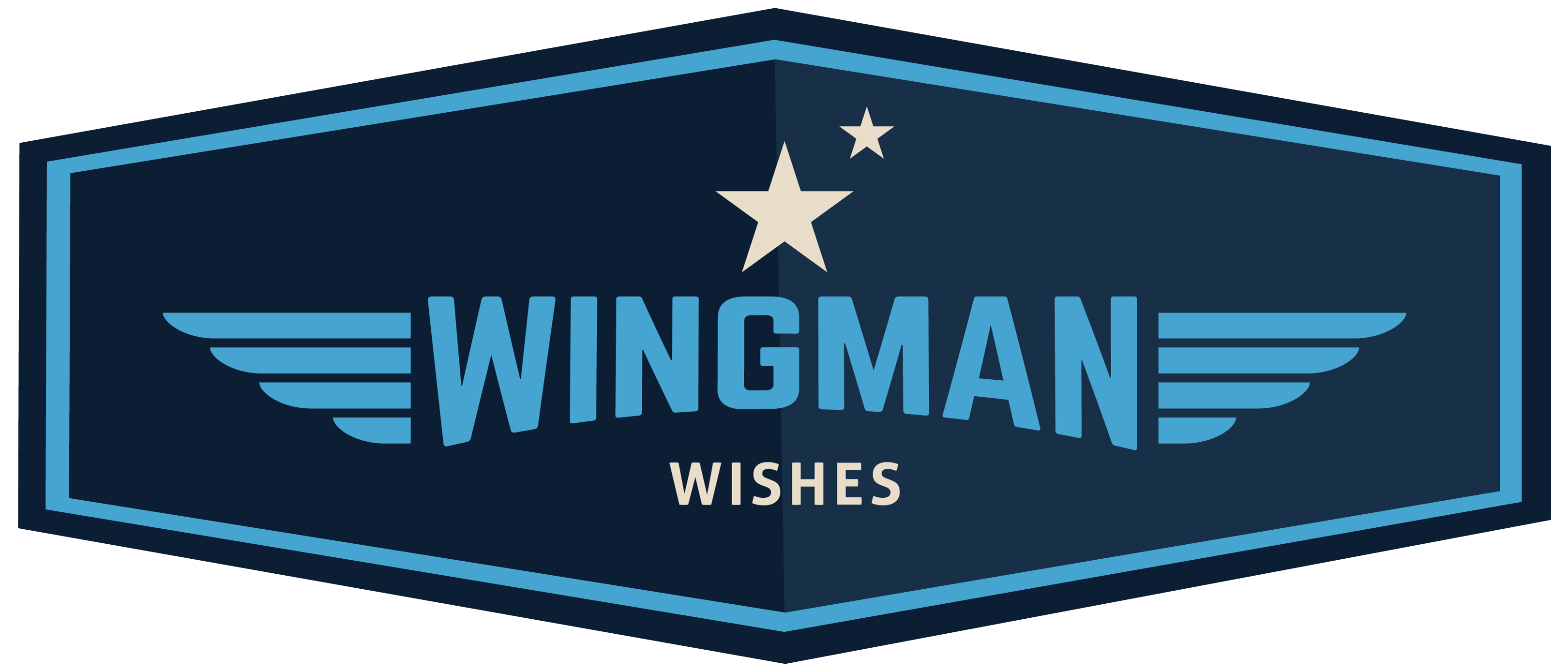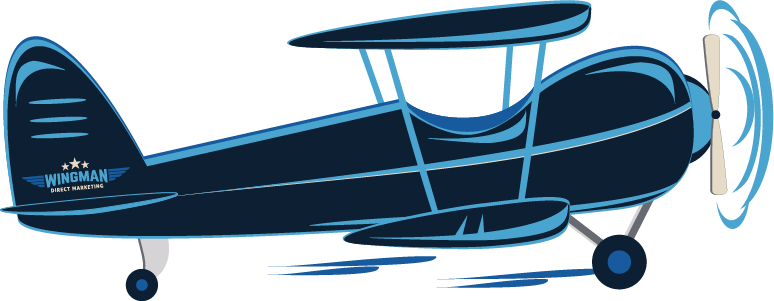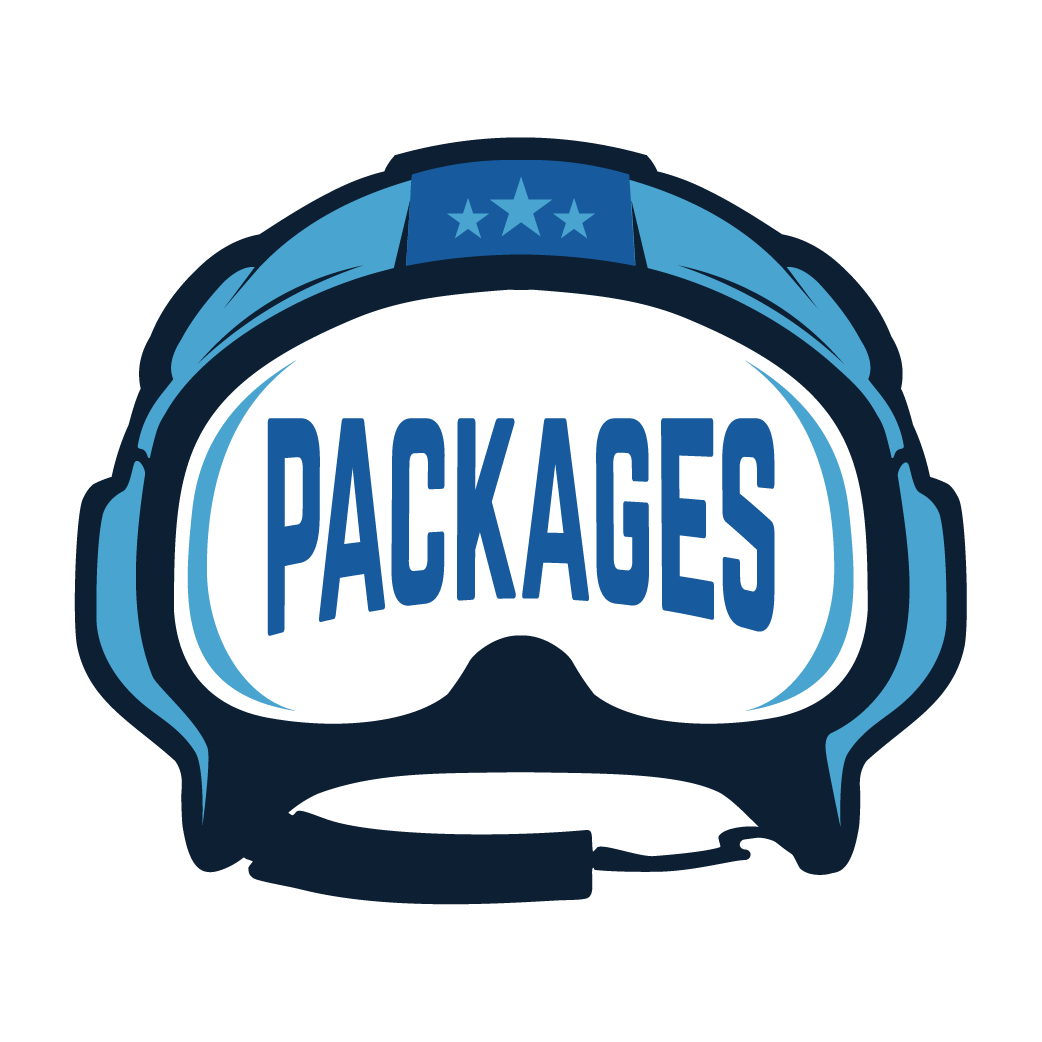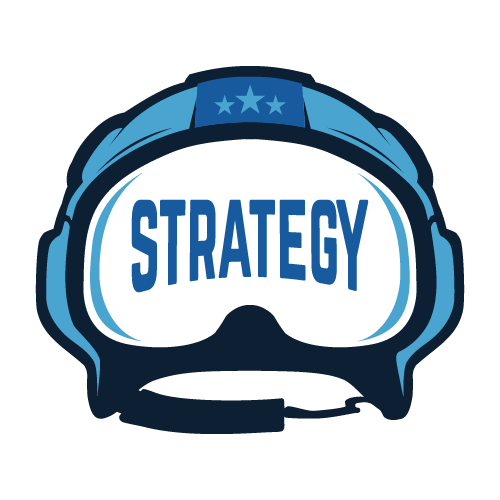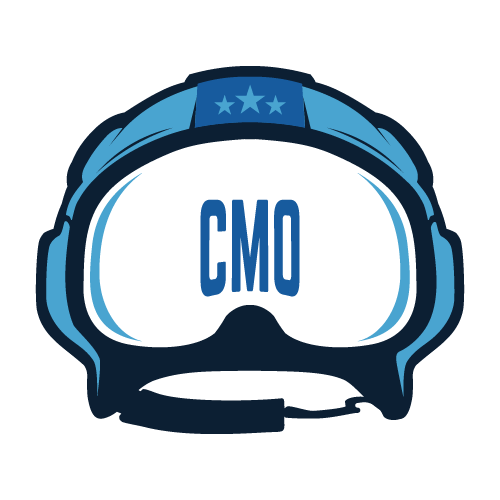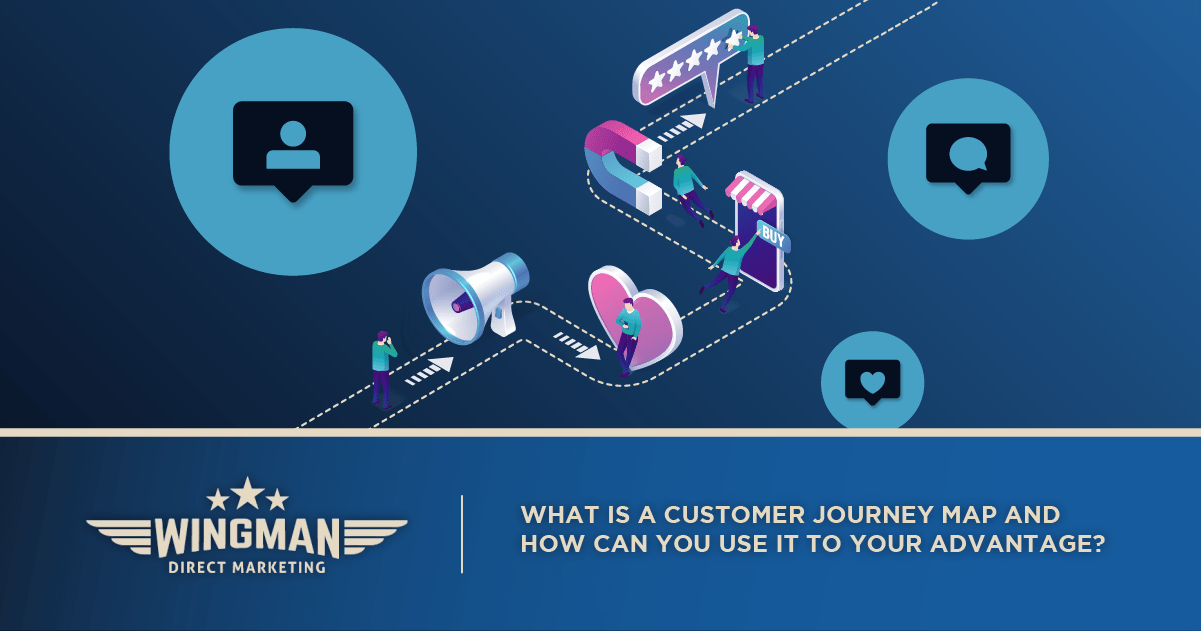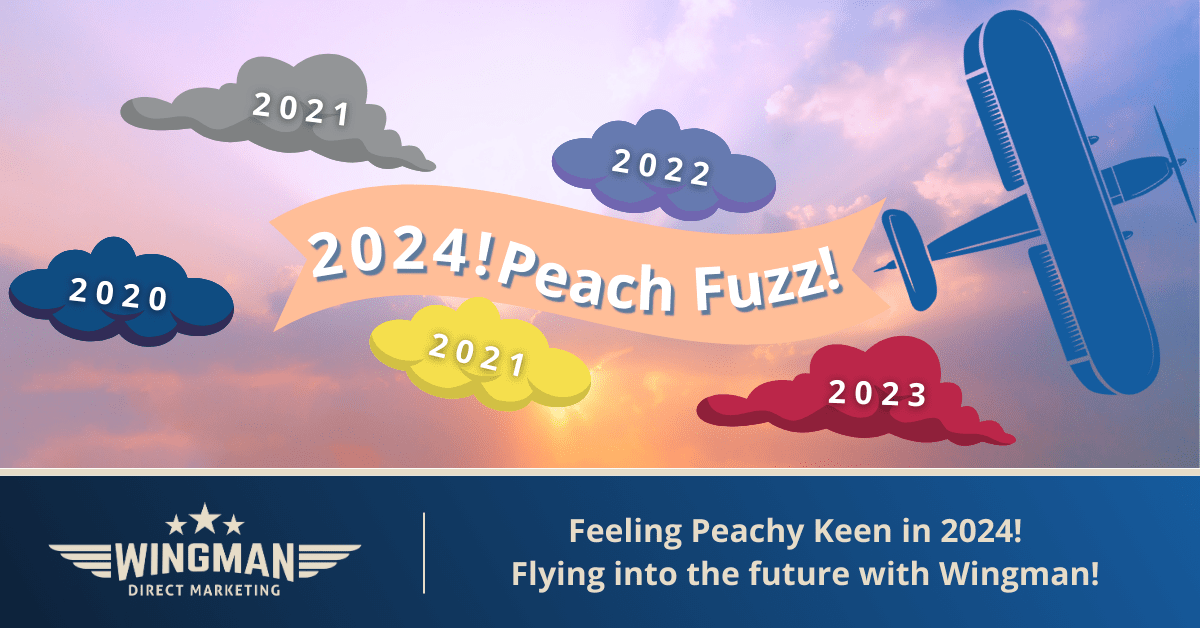A customer journey map and act of creating one for your business reveals processes and interaction points, identifies where channels can be switched, and highlights areas where information can be exchanged. This helps service your customers better and better and also should be tied to your own business objectives and goals.
Earlier in 2021, Wingman Direct Marketing became part of the Duct Tape Marketing network of marketing consultants. We did this in part because there are so many moving parts that go into creating a great marketing strategy that, without a guiding framework, it’s easy to get tangled up, twisted around, and lost completely in the weeds. The Duct Tape philosophy is that marketing is a system to move prospects through the stages of getting to know you, liking and trusting you and then trying/buying from you. But it doesn’t end there. Once they are a customer, you need to keep nurturing the customer journey into repeat buying and ultimately becoming an advocate for you referring you to their friends.
One of the best ways to do this is via a customer journey map. No, you don’t need an elaborately designed infographic poster, or a Figma file with dozens of color-coded elements representing each and every step a customer takes within your product and company lifecycle. An effective customer journey map is one that promotes empathy and provides a clear vision for improving customer interactions.

So, what is customer journey mapping?
A customer journey map is a visualization of a customer’s experience with your brand, from awareness to purchase and beyond. They typically include touch points, customer sentiments, pain points, and actions, plotted in sequential order. The goal isn’t just to create a timeline—it’s to encourage empathy and help designers and stakeholders understand how their customers’ needs and feelings fluctuate over the course of their journey. With this shared understanding, teams can better identify opportunities for innovation and improvement. Businesses use customer journey maps to tick off some or all of these boxes:
- Understand the customers’ experience from their perspective
- Visualize the end-to-end customer experience
- Increase empathy for current and prospective customers
- Target personas and solve problems more effectively
- Improve internal alignment and break down silos
- Tell better stories to improve stakeholder buy-in
- Evolve focus from touch points to journeys
- Create or redesign interactions
Truly and deeply understanding the customer journey is critical to your company’s success and ability to become more customer-centric. Aside from the obvious benefit of understanding the activities, expectations, thoughts, and feelings of your customers, journey mapping allows your company to dispel silos, streamline services across departments, and tailor them to meet the most critical needs of your customer.
Tie the journey to your goals
Done well, the customer journey mapping exercise should be tied to business goals as well. As you identify the steps of the journey, you should also tie each step to quantifiable objectives. Are you trying to increase customer loyalty? What about customer lifetime value? Are you trying to mitigate risk or decrease churn? Are you trying to gain more market share by competing more aggressively? Are you trying to gain a better understanding of a new customer segment you’re now serving as part of an expansion or recent acquisition? Make sure you can connect the dots on how your journey map will help meet these goals.
Stages of your customer journey map
Every company should do customer journey mapping, but not every company’s customer journey map will look alike or have the same level of detail. Below, we share an abridged version of the Duct Tape Marketing hourglass customer journey mapping stages. This system helps you put yourself in the mind of your customer and ask how they find and ultimately decide to buy from or hire you. Then once they become a customer, determine what they would expect during their journey. What would “they” do? Then, ask yourself, what must you do to maximize your efforts to ensure each step along the customer journey mutually is easy for them and ties to your objectives.

By taking the marketing hourglass approach and giving equal attention to building trust and delivering a remarkable experience, you set your business up to create the kind of momentum that comes from an end to end customer journey.
Know – This is the awareness phase. When attracting customers, articles that do well in search, advertising, social and even referrals need to start here. What message do you need to craft to cut through the noise and focus directly on your prospective customers’ problems? It is always about them.
Like – This is the stage where once you attracted them to your content and possibly your website/phone/email, you have give them reasons to come back, interact, engage, reasons to relate and even reasons to like your team.
Trust – In this stage, reviews, success stories and client testimonials are your currency.
Try – Now that they are wondering how your solution might work for them it’s time to shower them with useful information about how you can solve their problems with your products and services. You might also have an evaluation, trial version or low cost option to offer here. It is crucial you journey map the experience here – how do they sign up, onboard, use of the product/service, access to book of knowledge, etc.
Buy – For this stage the focus is on keeping the experience high. Think about how you orient a new customers, exceed their expectation and even surprise them. Similar to the try phase, you need to understand fully the user experience from transaction to billing, to customer service, etc.
Repeat – Perhaps the best way to get repeat business is to make sure your clients receive and understand the value of doing business with you. Every moment of your customer journey as an actual customer should be pondered. There is nothing worse than businesses that put all their efforts into wooing potential customers and then completely ignoring them once they are a customer. Here’s where you need to consider adding a results review process as well as additional upsell and cross sell touchpoints.
Refer – Your happy customers can be your best salespeople. Customers that have a great experience with your product or service will become advocates for you and spread the word about how you helped them, how you made them feel. Clearly the opposite is true. Ensuring you understand what led to bad customer experiences as well and adjust the aspects you can control. The Marketing Hourglass journey is ultimately about turning happy clients into referral clients. You do this first and foremost by creating a great experience, by being referral worthy, but you also have to build processes and campaigns that make it easy for your champion clients to introduce and refer your business.
The marketing hourglass model of customer journey mapping can be a thing of beauty. But, it is critical to note that it is NEVER COMPLETE. You and your business should always go to work on adding to it and making it better. Monitor and measure the places where people don’t seem to move easily to the next step and make conversion of each step. Every time you enter a new market or develop new product or service you can use this framework as a way to make sure you create the perfect end-to-end customer journey for every offering.
Conclusion
As described above, customer journey mapping is a key component in delivering outcomes for your business. It reveals processes and interaction points, identifies where channels can be switched, and highlights areas where information can be exchanged. It’s the designing of experiences in this journey – overlaying memorable touchpoints and interactions – where true value is delivered. If organisations don’t design signature moments and experiences throughout, brand promises and values can’t be translated and crucial opportunities to meet your business objectives will be missed.
Don’t know where to begin? If you want a Wingman to help you out, we’re only one contact away. Book a Wingman today.
You don’t have to fly solo.
